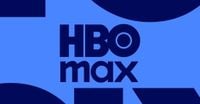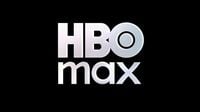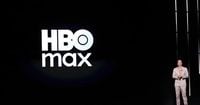In a move that has drawn both relief and chuckles from fans and industry insiders alike, Warner Bros. Discovery (WBD) officially reverted its streaming service back to the iconic HBO Max brand on July 9, 2025. The reversal ends a two-year experiment during which the platform was known simply as Max, a rebranding effort that had initially aimed to broaden the service's appeal but instead sowed confusion and diluted the strength of the HBO name.
The transition back to HBO Max was seamless for subscribers, requiring no action on their part. Existing apps automatically updated to display the new-old branding, with the familiar black-and-white HBO Max logo replacing the purple Max icon across devices and platforms worldwide. The change was also reflected online, with max.com now redirecting to hbomax.com, and the app listings on both the Apple App Store and Google Play Store updated accordingly. The App Store cheekily noted, "Same app. New-ish name. The plot twist everyone has been waiting for: Max is now HBO Max."
This latest rebranding came after Warner Bros. Discovery announced the shift in May 2025 during its annual upfront presentation, signaling a strategic pivot to emphasize quality over quantity in its streaming content. As WBD president and CEO David Zaslav stated at the time, “The powerful growth we have seen in our global streaming service is built around the quality of our programming. Today, we are bringing back HBO, the brand that represents the highest quality in media, to further accelerate that growth in the years ahead.”
HBO Max originally launched in 2020, consolidating HBO Go and HBO Now into one platform and adding a vast library of content from Warner Bros., Discovery, DC, and more. However, in 2023, WBD excised the "HBO" from the name to become Max, intending to signal a broader content offering that included Discovery's unscripted shows alongside HBO's prestige programming. This change, however, was met with widespread confusion and criticism, with many fans and industry observers lamenting the loss of the HBO brand's cachet.
Casey Bloys, chairman and CEO of HBO and Max content, humorously acknowledged the brand's rollercoaster journey at the May upfronts, quipping, "The good news is I have a drawer full of stationary from the last time around." This self-aware attitude was echoed in the social media sphere, where HBO/Max's own accounts shared memes and jokes poking fun at the repeated rebranding efforts. Even comedian John Oliver lampooned the switch on his show, likening the name changes to a baffling corporate decision gone awry.
The reversion to HBO Max is more than just a name swap; it reflects a renewed focus on the streamer’s core strength—premium, high-quality scripted content. WBD’s streaming chief, JB Perrette, underscored this by saying, "No consumer today is saying they want more content, but most consumers today say they want better content." This strategic realignment aims to leverage HBO’s long-standing reputation for groundbreaking series like "The Sopranos," "Game of Thrones," and more recent hits such as "The Last of Us" and "The White Lotus," which have consistently drawn subscribers.
Importantly, the service's content library remains robust and diverse. HBO Max continues to host a wide range of entertainment brands, including Warner Bros., Max Originals, DC, Harry Potter, and beloved sitcoms like "Friends" and "The Big Bang Theory." The platform is on track to reach 150 million subscribers by the end of 2026, with expansion plans including the UK market.
For subscribers, the switch back to HBO Max does not mean any disruption in service or changes in pricing. Current subscription tiers remain intact: Basic with Ads at $9.99 per month, Standard at $16.99, and Premium at $20.99. Profiles, watchlists, and viewing histories have been preserved, ensuring a smooth and familiar user experience.
While the rebranding might feel like déjà vu to some, it marks the fifth name change for the streaming service in 15 years, cycling through HBO Go, HBO Now, HBO Max, Max, and now back to HBO Max. This journey reflects the broader challenges and shifts in the streaming landscape, where companies continuously adapt to changing consumer preferences and competitive pressures.
Behind the scenes, Warner Bros. Discovery is also navigating corporate restructuring, with plans to split into two separate entities—one housing HBO and movie/TV studios, and the other focusing on news and sports brands like CNN and Discovery Plus. The return to HBO Max aligns with this refocusing on premium scripted content as a key pillar of the company’s future.
Despite the jokes and memes, the decision to bring back HBO Max underscores the enduring power of a strong brand identity in the crowded streaming market. It’s a recognition that while variety and volume have their place, quality and heritage resonate deeply with audiences. As the streaming wars continue to evolve, WBD’s bet on HBO Max’s prestige could prove a decisive factor in its quest for growth and subscriber loyalty.
So, while the name on your screen has changed once again, the promise remains the same: a curated selection of some of the best television and movies available today, all under the banner of a brand synonymous with quality storytelling.






